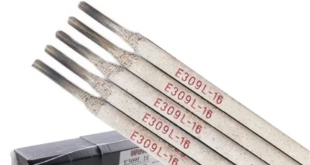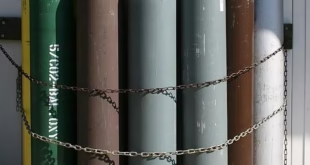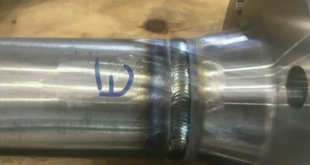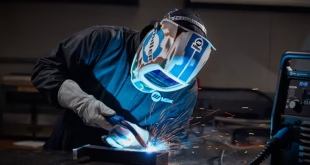Proper arc length control
Welding is a fundamental process in metal fabrication, joining two or more materials to create a strong and durable bond. One crucial aspect of welding that significantly influences the quality of the weld is the arc length. In this article, we will explore the definition of arc length in welding and delve into the importance of effectively controlling this parameter during the welding process.
Definition of Arc Length in Welding
The arc length in welding refers to the physical gap between the tip of the welding electrode and the surface of the workpiece. It is essentially the distance through which the electric arc is maintained during the welding operation. The electric arc is the intense heat source generated when an electrical current passes between the welding electrode and the workpiece, melting the metals and creating the weld.
Controlling the arc length is a critical factor in achieving a successful weld. It directly influences the stability of the arc and, consequently, the quality of the weld joint. The arc length is measured in inches or millimeters and is a dynamic parameter that needs careful consideration throughout the welding process.

Basics of Welding Arc
Welding, in its essence, is a transformative process where metals are joined through the application of heat, typically facilitated by an electric arc. Understanding the basics of the welding arc is fundamental to mastering the art and science of welding. In this section, we will provide an overview of the welding process and delve into the crucial role played by the electric arc.
Overview of Welding Process
Welding encompasses a diverse range of processes, each tailored to specific applications and materials. However, at its core, the welding process involves creating a strong, durable bond between two or more metal pieces. This is achieved by melting the materials at the joint and allowing them to solidify, effectively fusing the components.
The welding process can be broadly categorized into several types, including Shielded Metal Arc Welding (SMAW), Gas Metal Arc Welding (GMAW), Tungsten Inert Gas Welding (TIG), and others. Each of these methods has its unique characteristics and applications, but they share a common principle, the generation of intense heat to melt the base metals.
Role of Electric Arc in Welding
At the heart of many welding processes lies the electric arc—a dynamic and high-temperature phenomenon created by an electric current passing between the welding electrode and the workpiece. This arc serves as the primary heat source responsible for melting the metals and forming the weld joint.
Heat Generation: The electric arc generates temperatures that can exceed thousands of degrees Celsius. This extreme heat is essential for transforming the solid-state of metals into a molten state, allowing them to merge and subsequently solidify into a unified structure.
Ionization of Gases: As the electric arc forms, it ionizes the surrounding gases, creating a conductive path for the electrical current. This ionization process contributes to the stability and continuity of the arc.
Energy Concentration: The electric arc concentrates a significant amount of energy into a relatively small area, providing precise control over the heating process. This concentration is vital for achieving the desired weld characteristics, including penetration depth and bead shape.
Ultraviolet Emission: The electric arc emits intense ultraviolet radiation, necessitating the use of protective equipment such as welding helmets with darkened lenses. These safety measures shield the welder’s eyes and skin from the harmful effects of ultraviolet light exposure.
Factors Influencing Arc Length
Effective arc length control involves understanding the key factors that influence its dynamics. Three primary factors play a pivotal role in determining the arc length in welding: voltage, current, and the type of electrode used.
Voltage
Voltage, or electric potential difference, is a critical factor affecting arc length. In welding, the voltage is the force that drives the electric current between the welding electrode and the workpiece. Higher voltage generally results in a longer arc, while lower voltage shortens the arc. Welders can adjust the voltage settings on their welding machines to control the length of the arc and, consequently, the heat input into the weld.
Current
Electric current is another crucial factor influencing arc length. The amount of current flowing through the welding circuit directly affects the intensity of the arc. Higher current tends to produce a more stable and longer arc, while lower current may lead to a shorter and less stable arc. Welders can adjust the current settings based on the material thickness and type, as well as the desired weld characteristics.
Electrode Type
The type of welding electrode used also has a significant impact on arc length. Different electrodes have varying coatings and compositions, influencing their melting rate and stability. For instance, a coated electrode in Shielded Metal Arc Welding (SMAW) may require a different arc length than a bare electrode in Gas Metal Arc Welding (GMAW). Welders must select the appropriate electrode for the welding process and adjust their technique to maintain the optimal arc length.
Significance of Arc Length in Welding
As we navigate the intricacies of welding, understanding the profound significance of arc length emerges as a cornerstone in achieving welds of exceptional quality. In this section, we will explore how arc length directly influences the overall quality of a weld and its specific effects on penetration and fusion.
Impact on Weld Quality
The arc length in welding is a critical parameter that significantly influences the quality of the resulting weld. Several aspects of weld quality are directly affected by the proper control and maintenance of arc length:
Bead Appearance: The appearance of the weld bead is a visual indicator of the overall weld quality. Proper arc length control contributes to a smooth, uniform bead with minimal spatter. A consistent arc length helps avoid irregularities in the bead, enhancing the aesthetic appeal of the weld.
Weld Strength and Integrity: Arc length plays a pivotal role in determining the strength and integrity of the weld joint. A well-maintained arc length ensures proper penetration and fusion between the base metals, creating a robust bond. In contrast, an improper arc length can lead to incomplete fusion, resulting in weakened welds susceptible to defects and failures.
Control Over Welding Variables: Precise control of arc length provides welders with the ability to manipulate and optimize various welding variables. This includes adjusting heat input, controlling the weld puddle, and influencing the shape and size of the weld bead. The ability to manage these variables contributes to the versatility and skill of a welder.
Effects on Penetration and Fusion
Arc length has a profound impact on two critical aspects of welding—penetration and fusion. Proper control of arc length directly influences these factors, shaping the mechanical properties of the weld joint:
Penetration Depth: Penetration refers to the depth to which the weld metal extends into the base metals. Maintaining the correct arc length is crucial for achieving adequate penetration. Too short of an arc may result in insufficient penetration, leading to incomplete fusion and weak joints. Conversely, too long of an arc may cause excessive heat dissipation, reducing penetration depth.
Fusion Between Base Metals: Fusion is the process by which the base metals melt and combine to form a unified weld joint. The arc length determines the degree of fusion between the materials. An optimal arc length ensures proper melting and bonding of the base metals, creating a sound weld with consistent metallurgical properties. Inadequate arc length can result in insufficient fusion, compromising the integrity of the weld.
Arc Length Control Techniques
Effectively managing arc length is a skill that distinguishes proficient welders. Various techniques are employed to control arc length, each offering its advantages and considerations. In this section, we will explore three primary methods: manual control, automatic control systems, and electrode positioning.
Manual Control
Manual control of arc length involves the direct intervention of the welder during the welding process. This hands-on approach requires skill, experience, and a keen understanding of the welding variables. Several techniques are employed for manual arc length control:
Visual Observation: Welders often rely on visual cues to assess and adjust the arc length. Maintaining a consistent gap between the electrode and the workpiece is essential. Visual observation allows welders to adapt in real-time, ensuring optimal arc length for the specific welding conditions.
Auditory Feedback: The sound produced by the welding arc provides valuable feedback to the welder. A stable and well-controlled arc produces a distinct sound. Changes in arc length or instability can be identified by variations in the sound, prompting the welder to adjust the distance accordingly.
Tactile Sensation: Experienced welders develop a tactile feel for the welding process. Sensing the resistance and response of the welding arc through the welding helmet and gloves, they can make subtle adjustments to maintain the desired arc length.
Manual control is often preferred in situations where adaptability and precision are paramount. Skilled welders can dynamically respond to changes in welding conditions, ensuring the arc length aligns with the specific requirements of the weld.
Automatic Control Systems
Automatic control systems leverage technology to regulate and maintain the arc length without direct intervention from the welder. These systems use sensors and feedback mechanisms to continuously monitor and adjust the arc length during welding. Key features of automatic control systems include:
Closed-Loop Systems: Closed-loop systems incorporate sensors that measure various parameters, such as voltage, current, and arc characteristics. The feedback from these sensors is then used to automatically adjust the welding parameters, including arc length, to maintain optimal conditions.
Adaptive Control: Some advanced systems employ adaptive control algorithms that can dynamically respond to changes in welding conditions. These systems can optimize arc length in real-time, compensating for variations in joint geometry, material properties, and other factors.
Electrode Positioning
The positioning of the welding electrode is a crucial factor in arc length control. Different welding processes may require specific electrode positions to achieve the desired results. Key considerations for electrode positioning include:
Welding Speed and Travel Angle: The speed at which the welding electrode moves along the joint influences arc length. Welders adjust travel speed to maintain consistent heat input and control the overall welding process.
The angle at which the electrode is held relative to the workpiece influences the arc length and heat distribution. Welders adjust the angle to optimize penetration, bead shape, and overall weld quality.
Work Angle: The work angle, or the angle of the electrode in relation to the direction of welding, also affects arc length. Proper work angle helps control the molten pool and ensures efficient heat transfer into the base metals.
Common Challenges in Arc Length Control
While mastering arc length control is crucial for producing high-quality welds, welders often encounter challenges that can impact the stability and effectiveness of the welding arc. In this section, we will explore three common challenges: electrode sticking, excessive spatter, and inconsistent penetration.
Electrode Sticking
Definition: Electrode sticking occurs when the welding electrode fuses to the workpiece instead of maintaining the desired arc length. This phenomenon can result in difficulty in maneuvering the electrode and disrupt the welding process.
Causes:
- Inadequate Arc Length: A too-short arc can lead to the electrode sticking to the workpiece.
- High Welding Current: Excessive current levels can increase the likelihood of electrode sticking.
- Incorrect Electrode Angle: Improper electrode angle can contribute to sticking.
Solutions:
- Adjust Arc Length: Ensure a proper arc length to prevent the electrode from sticking.
- Optimize Current Settings: Adjust welding machine settings to an appropriate current level.
- Maintain Correct Electrode Angle: Pay attention to the angle of the electrode to prevent sticking.
Excessive Spatter
Definition: Excessive spatter refers to the undesired scattering of molten metal particles during the welding process. This phenomenon can lead to a rough and uneven weld surface, requiring additional post-weld cleaning.
Causes:
- Incorrect Arc Length: Both too short and too long arcs can contribute to spatter.
- Contaminated Base Metal: Presence of contaminants on the workpiece can increase spatter.
- Improper Shielding Gas: Inadequate shielding gas coverage may lead to spatter.
Solutions:
- Maintain Optimal Arc Length: Control the arc length to reduce spatter.
- Ensure Clean Base Metal: Properly clean and prepare the workpiece to minimize contaminants.
- Verify Shielding Gas Flow: Ensure the correct flow rate and composition of shielding gas.
Inconsistent Penetration
Definition: Inconsistent penetration occurs when the weld does not achieve uniform depth into the base metals, leading to variations in joint strength and integrity.
Causes:
- Fluctuating Arc Length: Inconsistent arc length can result in uneven penetration.
- Incorrect Current Settings: Improper current levels may lead to inconsistent penetration.
- Uneven Welding Speed: Changes in travel speed can affect penetration depth.
Solutions:
- Maintain Consistent Arc Length: Ensure a steady and controlled arc length throughout the welding process.
- Adjust Current Settings: Optimize welding machine settings for the specific application.
- Control Welding Speed: Maintain a consistent travel speed to achieve uniform penetration.
FAQs
What happens if the arc length is too long?
If the arc length is too long, it can result in poor weld penetration, leading to weaker and less reliable welds.
Can arc length affect the strength of a weld?
Yes, arc length directly influences the depth of weld penetration, affecting the overall strength and integrity of the weld.
Are there different recommendations for arc length based on the welding process?
Yes, different welding processes and materials may require specific arc length adjustments. It’s essential to follow recommendations based on the welding technique being employed.
How can welders measure and adjust arc length during the welding process?
Welders can visually inspect the arc length and make real-time adjustments based on the desired welding outcome. Training and experience play a crucial role in mastering this skill.
Is there a recommended arc length for different types of electrodes?
Yes, each type of welding electrode comes with recommended arc length parameters. Welders should refer to the manufacturer’s guidelines for the specific electrode being used.
Conclusion
In conclusion, arc length control is both an art and a science in welding. Welders who invest in comprehensive training and continuous skill development will not only master the technical aspects of arc length control but also contribute to the advancement of welding practices, ensuring the production of superior and reliable welds across diverse applications.
 Welding of Welders All about Welding and Welders
Welding of Welders All about Welding and Welders



